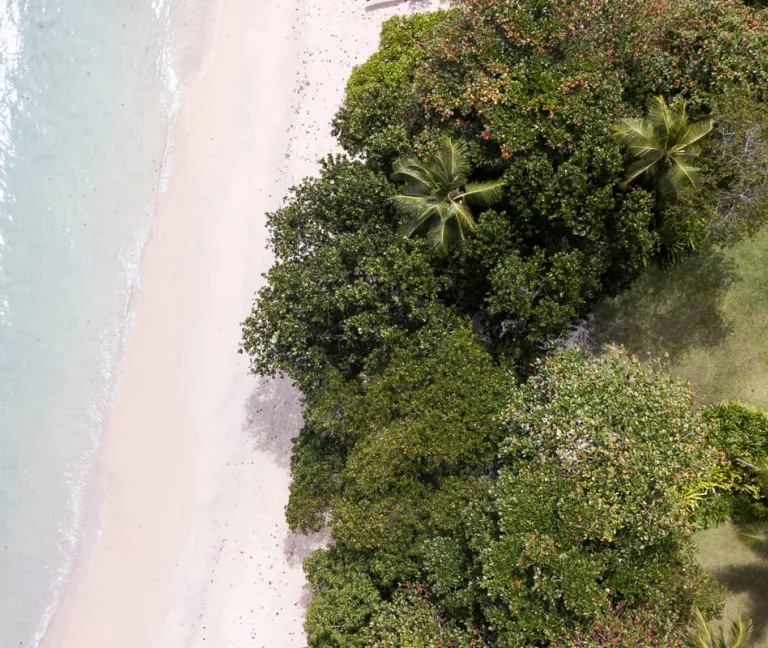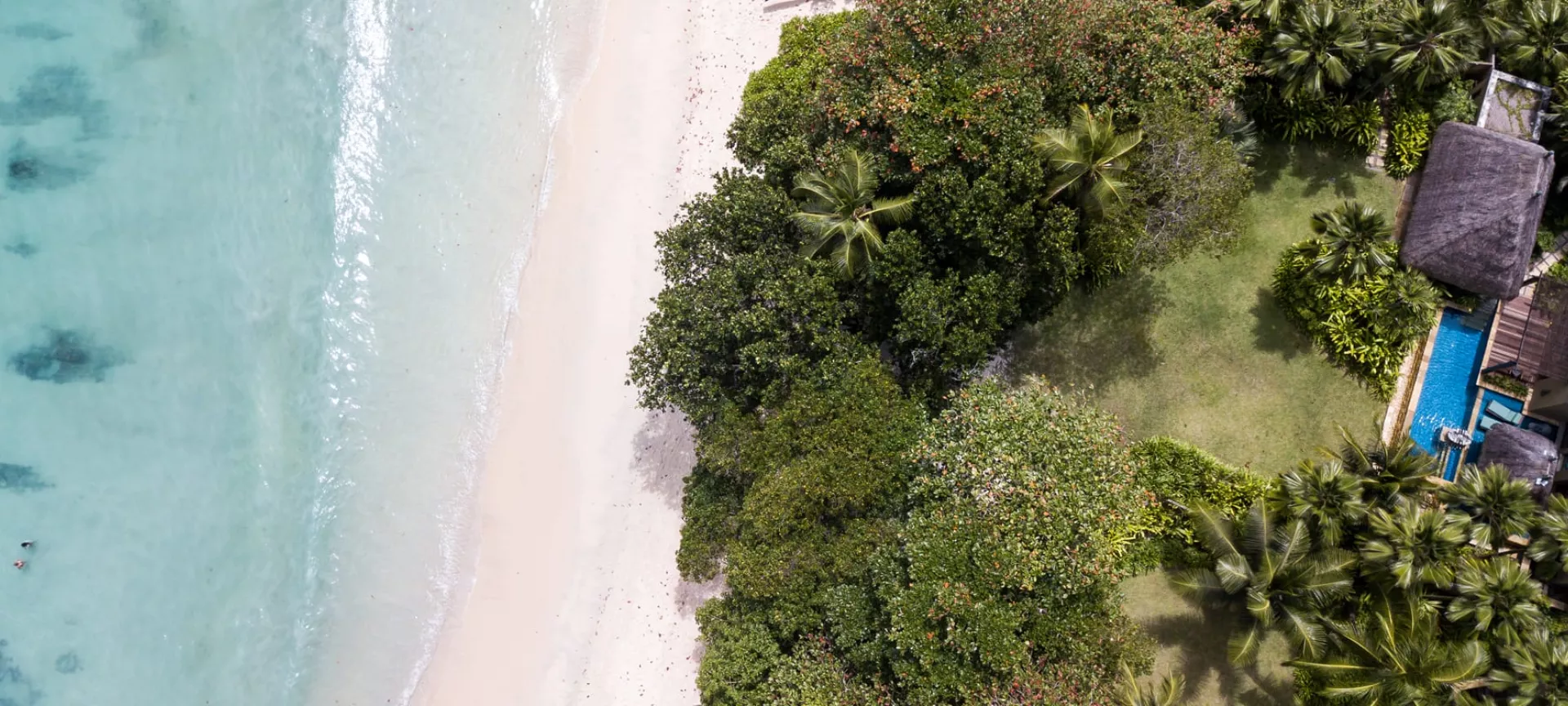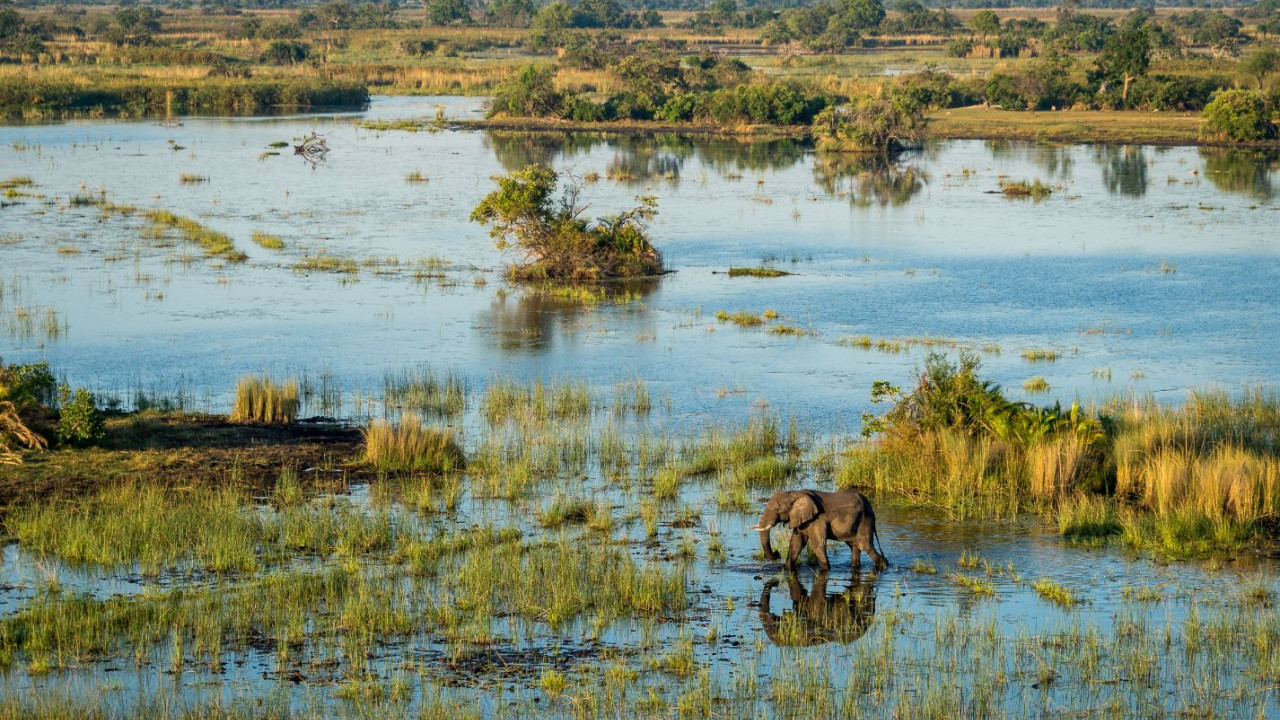
The Okavango Delta is one of Africa's best known wilderness areas.
For almost half of the year, this unique wetland becomes a myriad of channels and rivers that absolutely brim with wildlife.
Existing due to tectonic movements that occurred hundreds of thousands of years ago, this immense volume of water is one of nature's greatest oddities, and one of its greatest wonders.
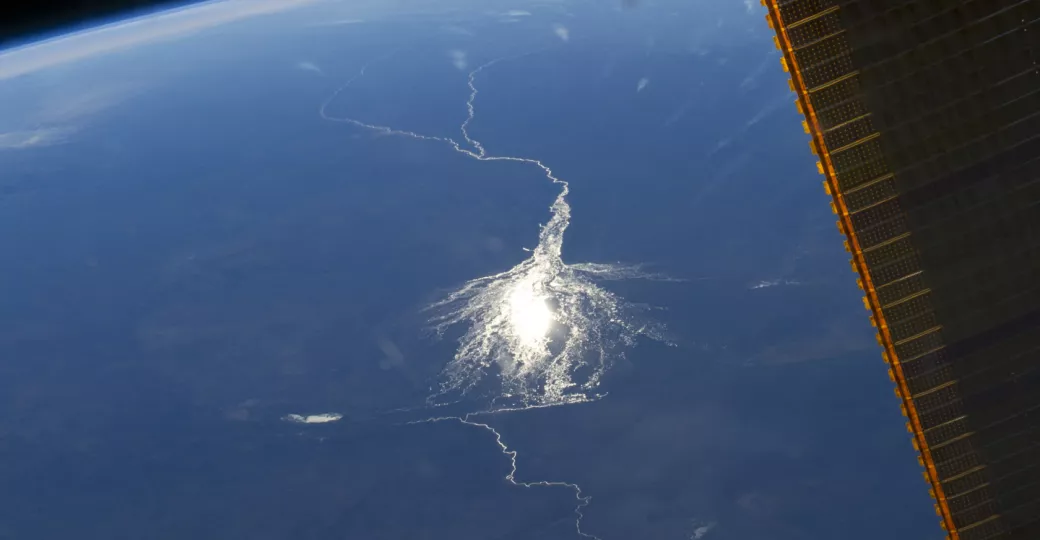
The Okavango Delta from the International Space Station (ISS040-E-8209, June 6, 2014)
Somewhat counter-intuitively, the delta is the wettest during the height of the dry season - several months after the rains in Botswana have ended. During this time, you can expect game drives to involve adventurous channel crossings with water-levels threatening the top of the bonnet.
It's also during this time that you'll have the opportunity to go on water-based safaris - drifting silently through the channels in a mokoro (traditional dug-out canoe), or navigating some of the larger channels in a more sturdy power boat.
But, how does this amazing and unique inland delta form? Read on to find out:
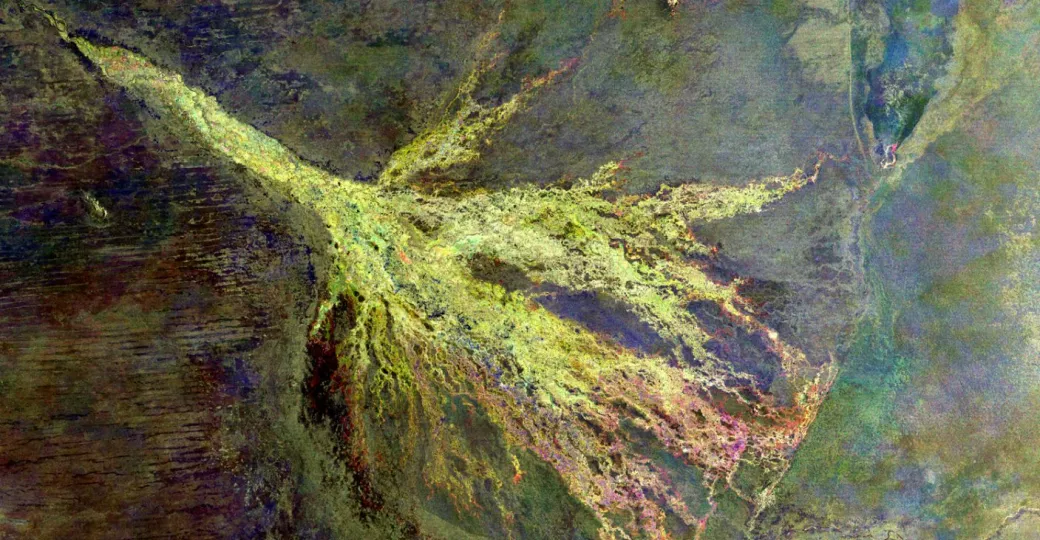
Okavango Delta - European Space Agency (292694)
Distant Beginnings
In early October each year, the build-up of heavy rainfall more than 1,000 kilometres away in the Angolan highlands start to slowly flow south towards Botswana in the form of two great rivers.
In southern Angola these rivers converge into one, the Cubango River, which then winds it way south towards the northern border of Botswana. The first small pulses of water typically arrive as early as February, with the lions share of the 9.4 cubic kilometres of water arriving between April to June.
It is believed that hundreds of thousands of years ago, this river flowed freely through Botswana and pooled into a great lake which would have been in the far east of the country, an area where today we find the Makgadikgadi Basin. However, a massive earthquake some 60 - 80,000 years ago disrupted the topography of the region and resulted in a huge expanse of perfectly flat land.
As we all know, rivers flow downhill, so, when the Cubango River reaches this flat ground today, the water spreads out and results in the gigantic inland delta system we know today. If you look closely in the two images above you can see a number of perfectly straight lines - these are the tectonic plates which today act as a natural barrier to the water's flow in the form of rivers and channels.
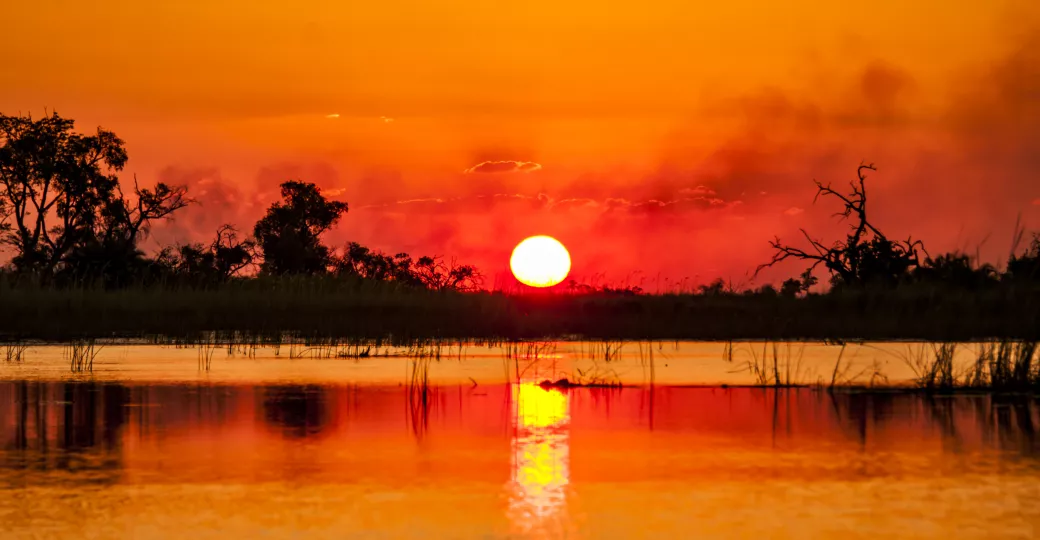
Sunset over the Okavango Delta - Toby {Pheasant
Where the Okavango Delta starts to spread out is known as the "Panhandle" - this is where the volume, speed and depth of the water is at its greatest - at around 2m deep. Permanent and seasonal swamp-lands then extend out from the Panhandle covering around between 10 - 18,000 square kilometres, depending on the amount of rainfall. These swamps are generally less than half a metre deep and are dotted with small islands - safe-havens for the less aquatic animals.
By October the majority of the water has evaporated in the searing heat, or has drained into the Thamalakane River and onto Lake Xau and the Makgadikgadi Pans. Seasonal thunderstorms then arrive in Northern Botswana in November & December and the ecosystem is drenched again with rainfall.

Game drive through the Okavango Delta - James Handley
When to time your visit?
January - March
With foals, calves and lambs starting to be born in December, this is 'baby season' and predator action can be spectacular. The majority of the annual rains fall during this period meaning that the natural pans are full and the bush is transformed into lush green canvas.
It's by no means a washout - there may be a few hours of rain during the long days. Birds are in abundance and the vibrant backdrops are great for photography. Flamingos can be seen on the salt pans further south in Botswana.
Lodges are their cheapest
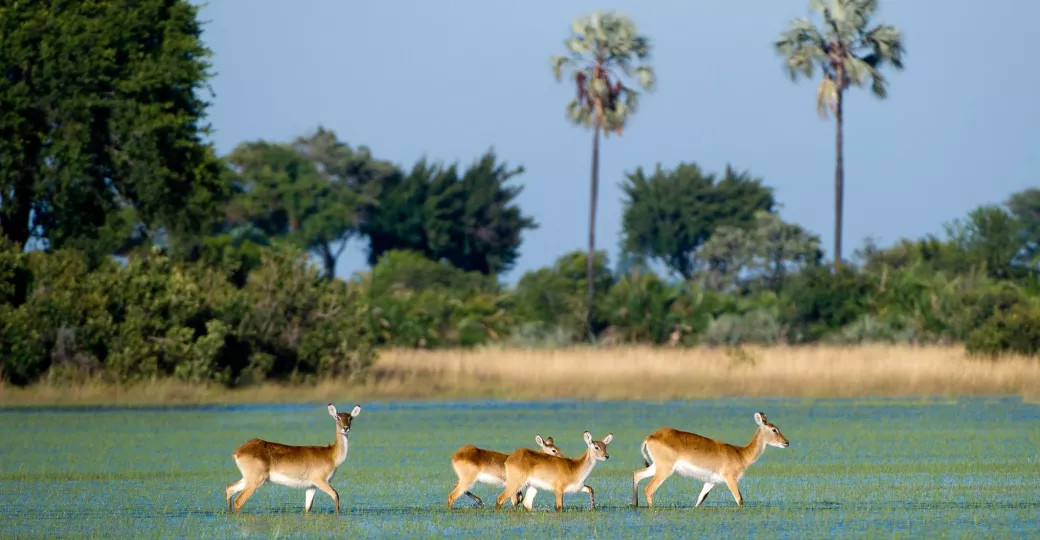
Red lechwe keeping an eye out for any predators
April - May
The rains abate and it's a fantastic time to be in the delta. Grasses are long, but this isn't a problem in private concessions. The flood peaks in the panhandle and nights become cooler. The first wave of the flood reaching the central delta coincides with impala rutting season. Breeding elephant herds move north.
Lodges are in their shoulder season
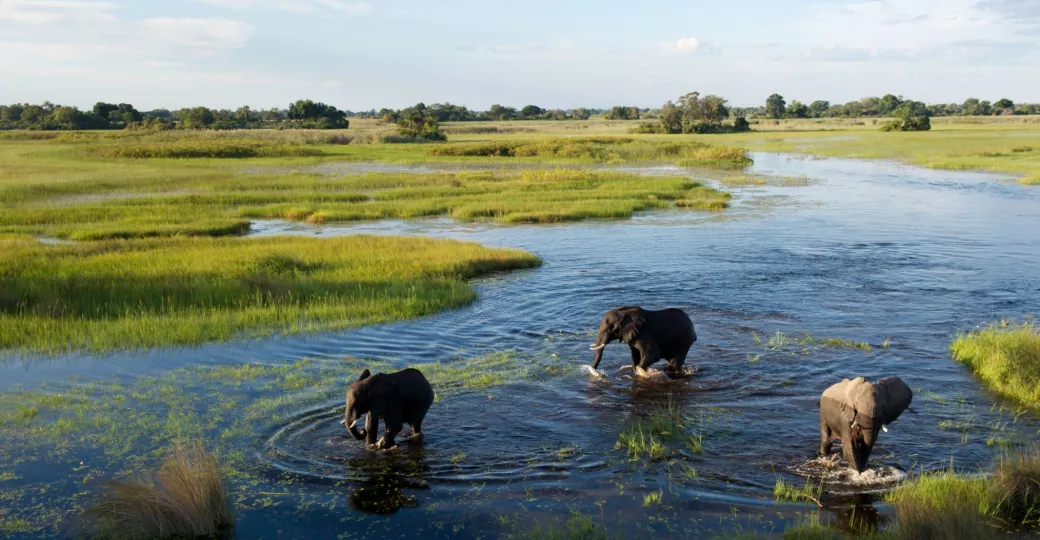
The water depth in the floodplains is remarkable shallow
June - August
With the floods taking hold of the region filling up the pans, game viewing is at its peak. The high water levels causes some wildlife to become stranded on islands. Temperatures are cooler. Elephants are concentrated around Linyanti area - amazing for mokoro trips. Aardvark sightings peak on Makgadikgadi pans. Wild dogs start to den and the vegetation takes on a neutral winter colouring and starts to thin.
This is when lodges are in high/peak seasons
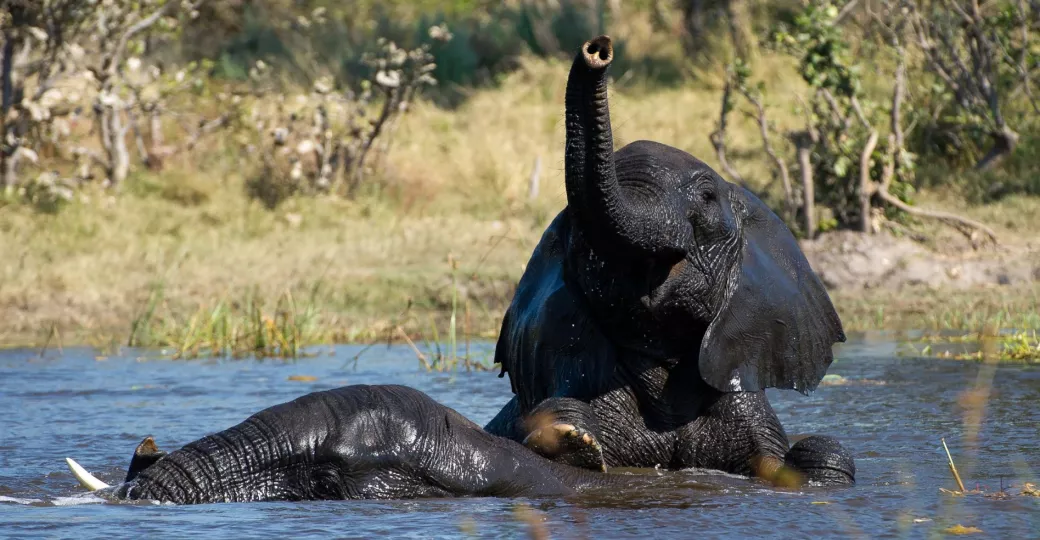
Elephants revelling in the plentiful water
September - October
Wild dogs leave dens with their pups, nesting carmine bee-eaters arrive in the northern reaches of the delta. Leopards lurk in trees waiting for impala to feed on fallen sausage tree flowers. The elephants start to spread out and roan & sable can be sighted around Khwai. October sees a peak in temperature (up to 40C) - it can also be quite windy. Expect spectacular sunsets as dust starts to fill the air. The rapidly evaporating water concentrates wildlife around remaining water sources.
Lodges are still in high season
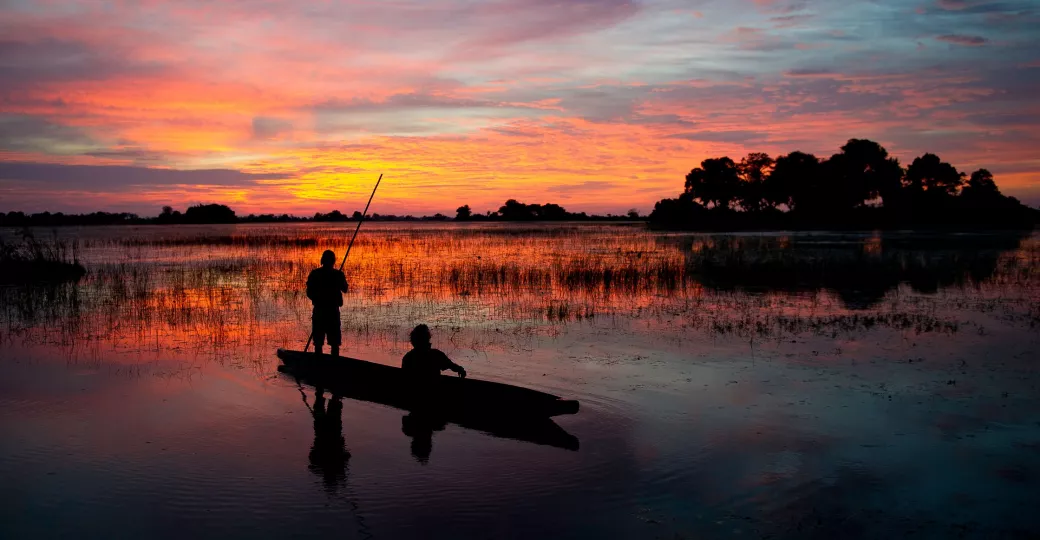
A sunset mokoro trip
November - December
Periodic thunderstorms begin while the first summer migrant birds arrive. Birthing season for plains game. Start of the zebra migration on the Makgadikgadi pans. Expect very dramatic skies as the rains start to fill natural pans and bush is transformed. Red, pink and orange wild flowers carpet the plains.
Lodges drop back to shoulder season
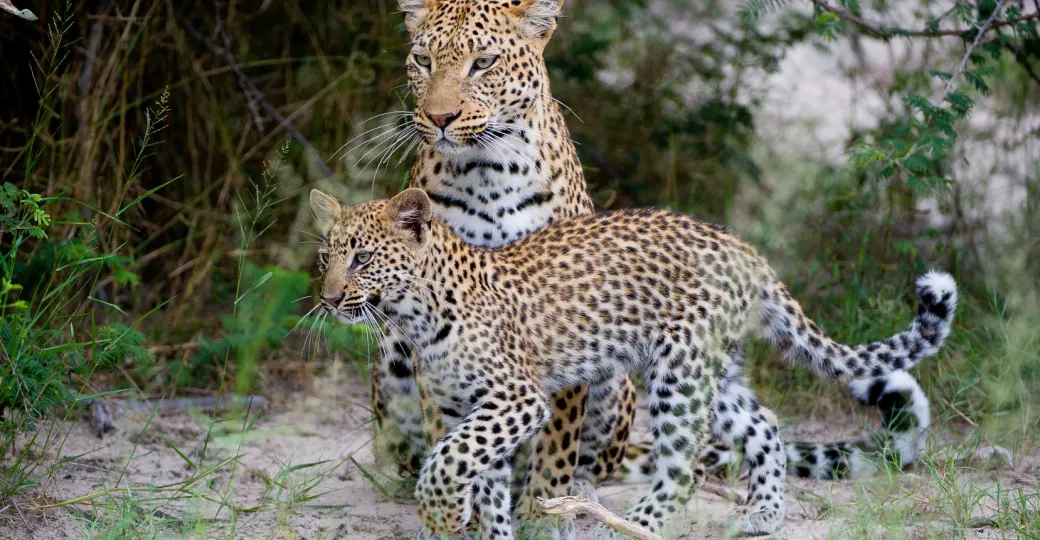
A mother leopard and her cub in the delta
The only way to really appreciate the splendour of this breath-taking part of the world is from the air. As the majority of the camps and lodges in the delta are only accessible via short flights, you'll have the opportunity to marvel at the waterways and wildlife as you come in to land.
If we've inspired you to visit the Okavango Delta, head on over to our Botswana page to find out more about this phenomenal country.
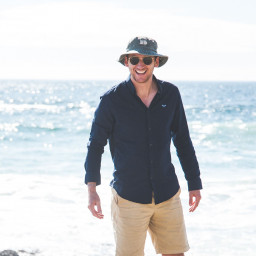
James Handley
Born and bred in the South of England, James is Bonamy’s intrepid traveller. When not honing his skills in London over the last decade, he's spent much of his time on self-planned expeditions and a...
View profileNever miss a notebook entry with our newsletter

